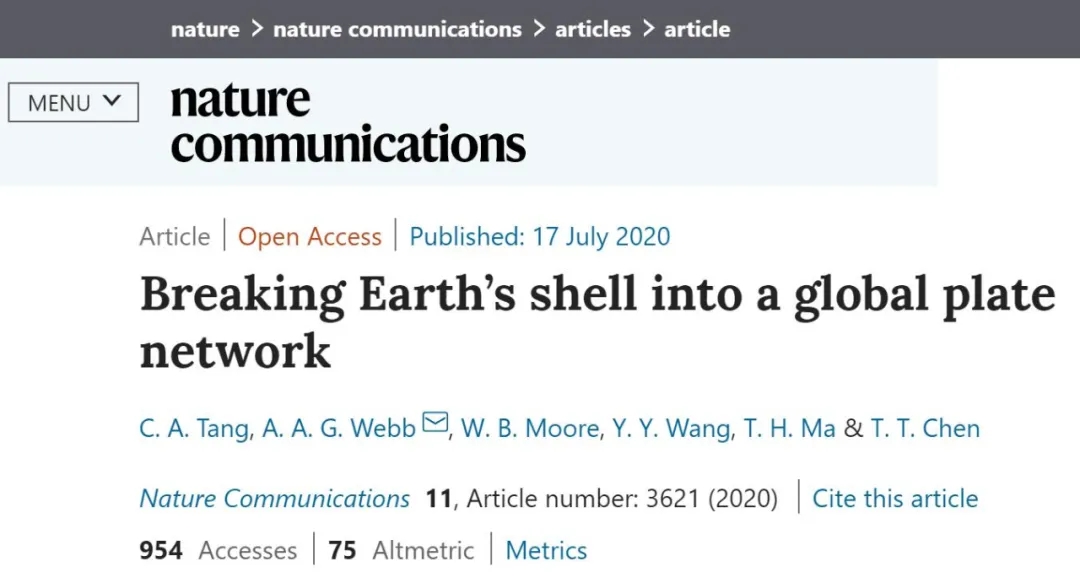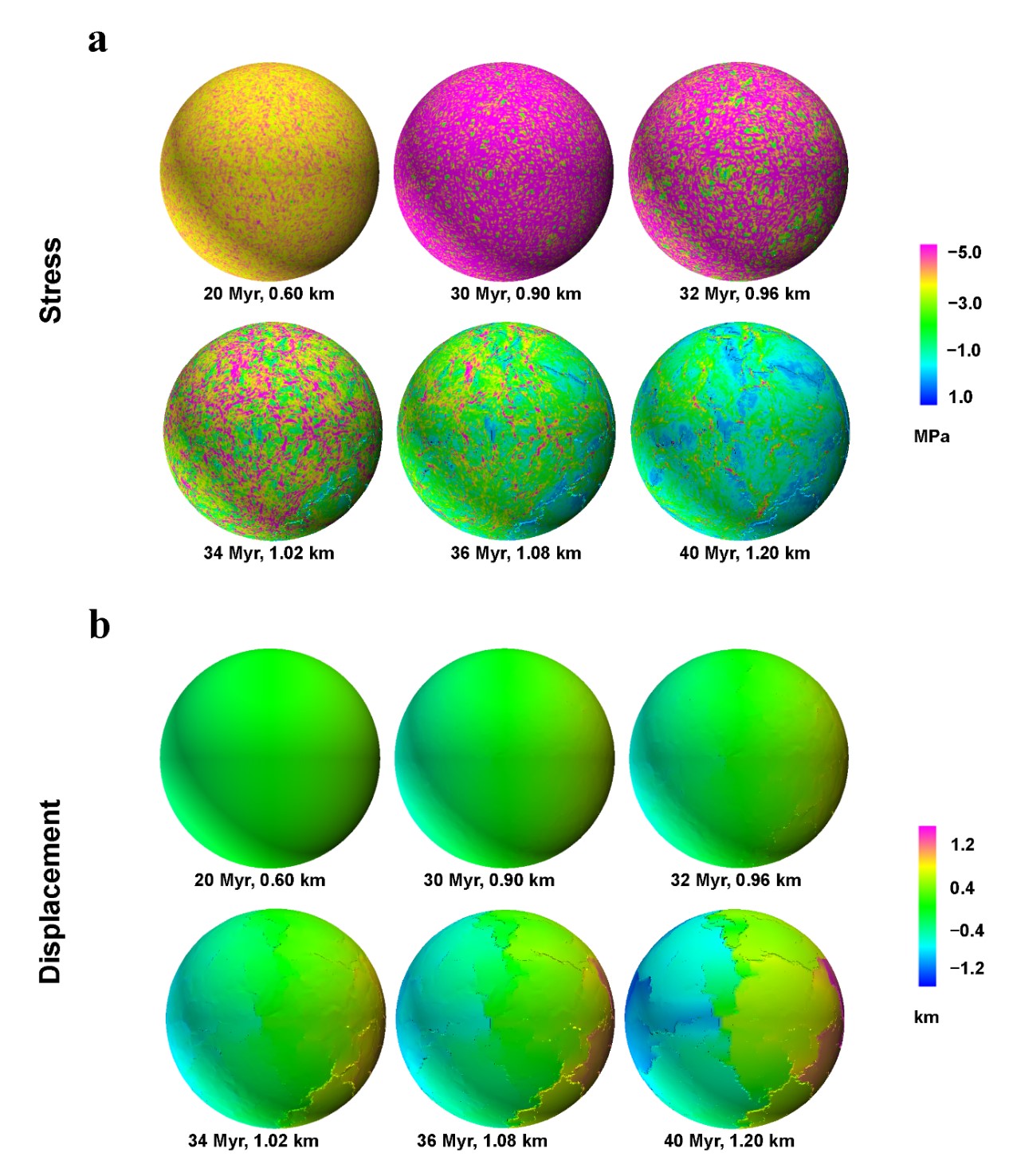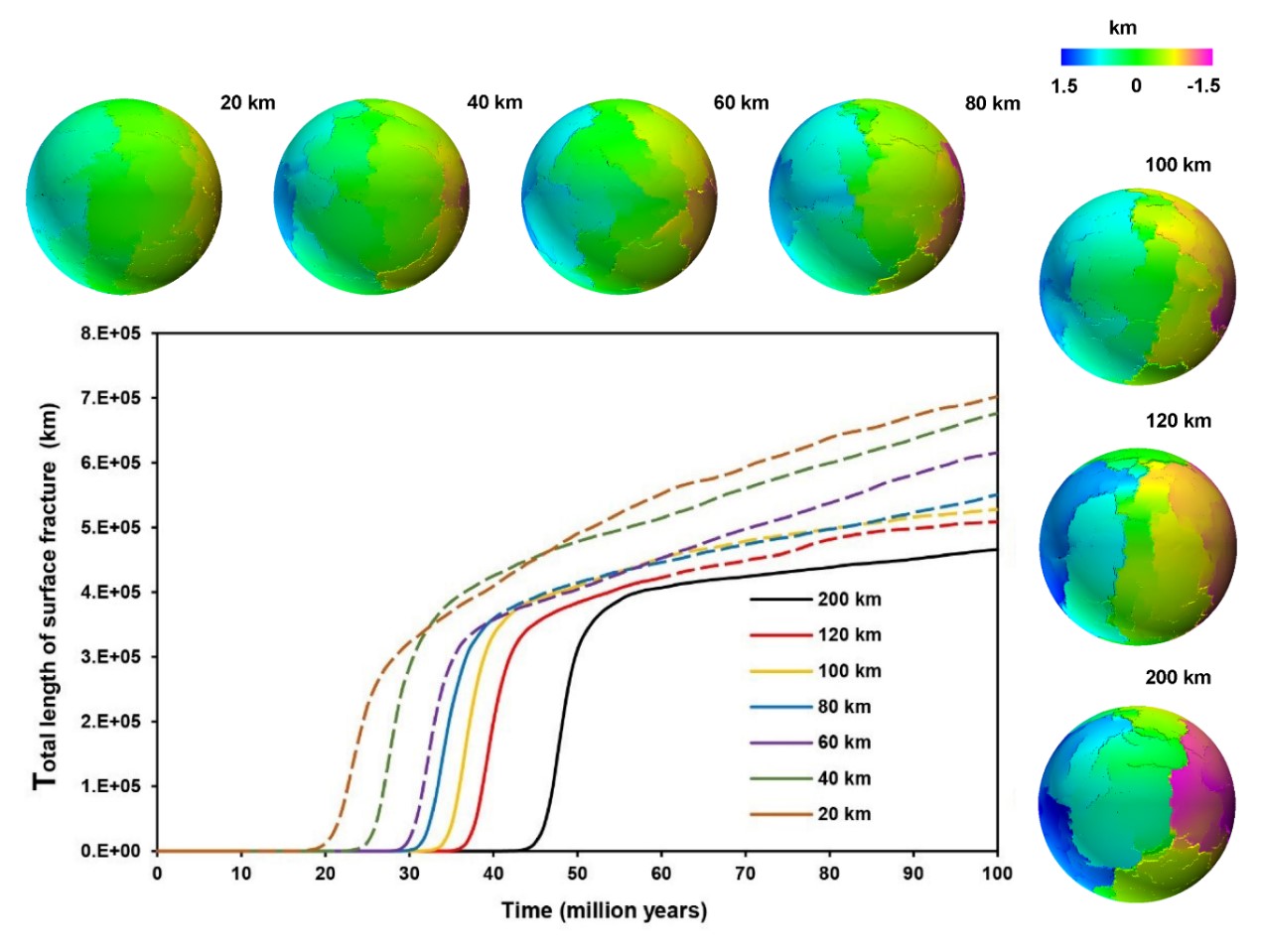Date:Jul 30, 2020
Source: Faculty of Infrastructure Engineering
By Li Xiang, Liang Zhengzhao
A new study entitled “Breaking Earth’s shell into a global plate network” was published inNature Communications () by Professor Tang Chun’an (from the Faculty of Infrastructure Engineering, Dalian University of Technology) and his international team.

The initiation mechanism of Earth’s plate tectonic cooling system remains uncertain. A growing consensus suggests that multi-plate tectonics was preceded by cooling through a single-plate lithosphere, but models for how this lithosphere was first broken into plates have not converged on a mechanism or a typical early plate scale. A commonality among prior efforts is the use of continuum mechanics approximations to evaluate this solid mechanics problem. Here they use 3D spherical shell models to demonstrate a self-organized fracture mechanism analogous to thermal expansion-driven lithospheric uplift, in which globe-spanning rifting occurs as a consequence of horizontal extension. Resultant fracture spacing is a function of lithospheric thickness and rheology, wherein geometrically-regular, polygonal-shaped tessellation is an energetically favored solution because it minimizes total crack length. Therefore, warming of the early lithosphere itself—as anticipated by previous studies—should lead to failure, propagating fractures, and the conditions necessary for the onset of multi-plate tectonics.

Figure 1. Plate-breaking reference model (redraw from Tang et al., 2020)

Figure 2. Fracture development across shells with various thicknesses (redraw from Tang et al., 2020
Professor Tang Chun’an has been engaged in research on the mechanism of rock fracture process and numerical simulation methods. In recent years, based on years of research on rock fracture mechanics, he has actively carried out cross-disciplinary research in transboundary earth sciences and proposed a new hypothesis on the evolution of the earth, the Great Earth Crack, which is driven by the earth’s own heat balance. By establishing a heat balance equation for the Earth system, he elaborated the basic law of the periodic cold and heat changes of the Earth caused by changes in the heat balance state, and gave new explanations for a series of interrelated major geological events such as plate origin, supercontinent cracking, drift and collision, volcano formation, extinction triggering mechanism, glacier growth and melting, and global warming in the process of Earth evolution, which has gained the attention of mainstream geological disciplines. He has published several articles on Earth evolution in Physical Review E, American Journal of Science, Geological Journal, Science Bulletin and Nature Communications. He was selected by Elsevier as one of China’s most highly cited scholars in the field of Earth and Planetary Sciences for six consecutive years, and was externally appointed by China University of Geosciences, Wuhan as Chief Professor of Geotectonics.Associate Professor Ma Tianhui and PhD student Wang Yongyi from DUT, together with Chen Tiantian, a PhD student at Northeastern University, are co-authors of the article. Collaborators also include Dr. Webb from the Department of Geology at the University of Hong Kong and Professor Moore from the Department of Atmospheric and Planetary Sciences at Hampton University, USA. Their early model of the Earth becoming cooler and hotter was published in the main issue of Nature in 2013.
Editor: Li Xiang